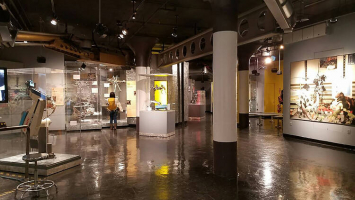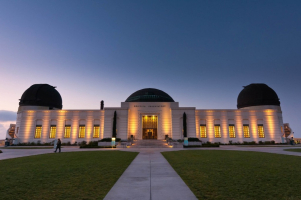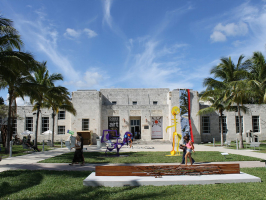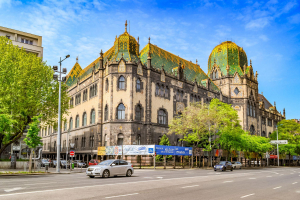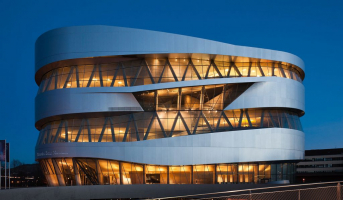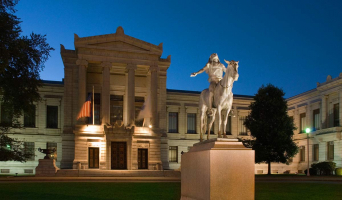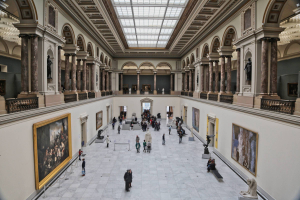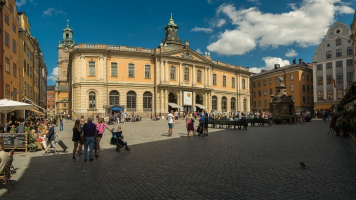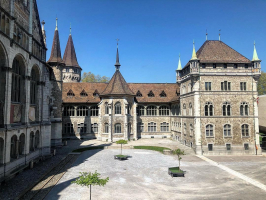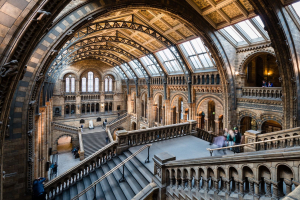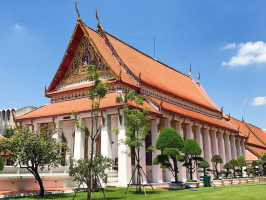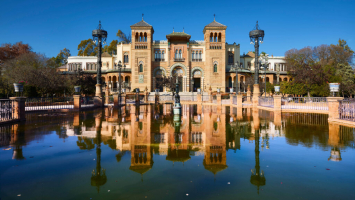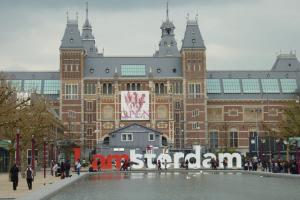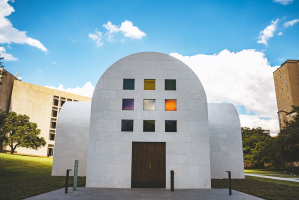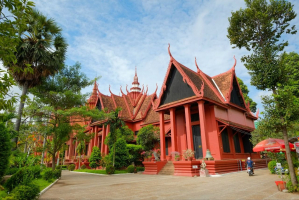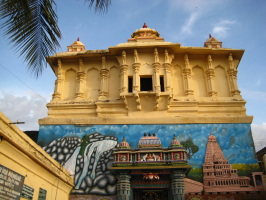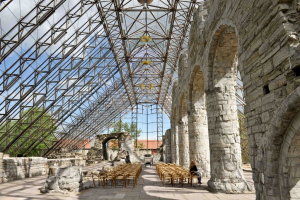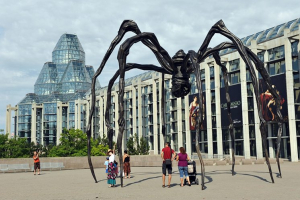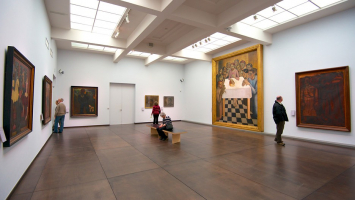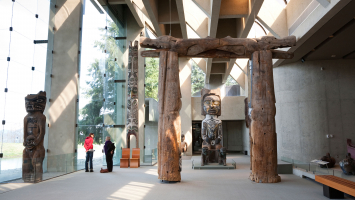Top 10 Best Museums to Visit in China
The best museums in China are scattered over the 'middle kingdom', and include preserved ancient buildings, world-class modern museums with large collections. ... read more...They're great for learning about China and its history as well as sightseeing. The best of these museums are listed below, in order of suggestion.
-
The Palace Museum is a special World Cultural Heritage, the largest comprehensive art museum of ancient Chinese culture, a pride for the Chinese nation, a precious cultural legacy for all human beings, built on the largest and most well-preserved wooden structure palace complex - Forbidden City of the Ming and Qing Dynasties. The massive royal palaces are now a huge treasure with innumerable priceless gems from the Ming and Qing Dynasties, as well as living fossils of Chinese imperial history.
Both serving as the Forbidden City's protection administration as well as a collection, research, and exhibition institution for all ancient Chinese cultural and historical relics from the Ming and Qing Dynasties and other periods, the Palace Museum has the most complete and best quality collections of 25 main categories totaling over 1,800,000 artifacts, 8,000 first grade items.
The imperial palaces finally open to the public after 500 years of historical turmoil. Following the central axis and visiting, palaces or halls on both sides is the most suggested tour route. Cining Palace Garden (Garden of Compassion and Tranquility), Shoukang Palace (Palace of Longevity and Health), Taihe Palace (Hall of Supreme Harmony), Qianqing Palace (Palace of Heavenly Purity), and others are the perfect blending of delicate preserved-relic and antique constructions.
Apart from palace visits, there are ten permanent galleries, including the Gallery of Ceramics, Calligraphy & Painting, Bronze, Treasure, Qing Imperial Opera, Jade(closed now), Sculpture, Historic Architecture, Hall of Clocks, Digital Gallery, and Kulangsu Gallery of Foreign Artifacts from the Palace Collection. Furthermore, Palace Museum hosts several exceptional temporary exhibitions on unique cultural subjects, as well as out-of-town shows to showcase the museum's magnificent holdings and foster cultural interchange with other cities.
Location: No.4 Jingshan Front Street, Dongcheng District, Beijing City
Website: en.dpm.org.cn
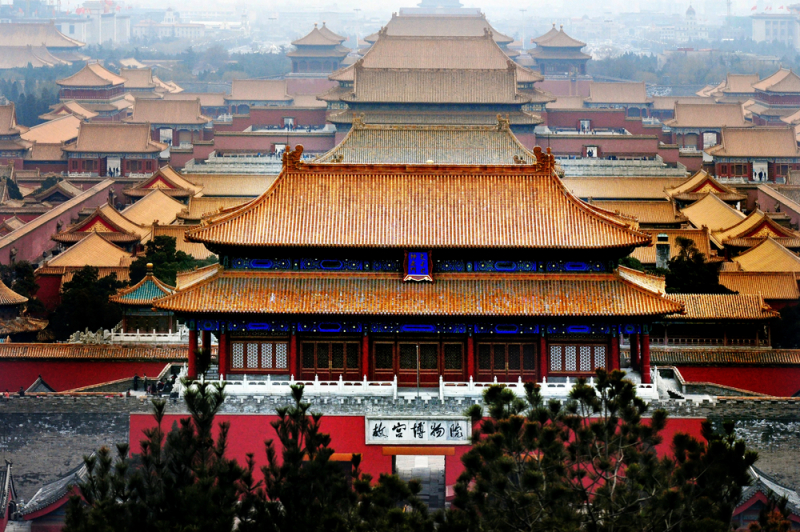
Via: Live Science 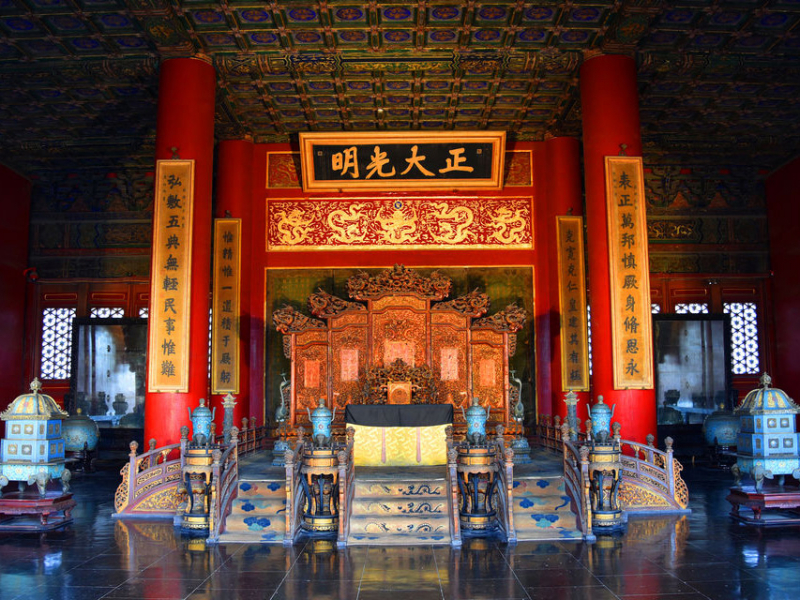
Via: beijing-forbiddencity.com -
Shanghai Museum is a major gallery of ancient Chinese arts with over 100,000 cultural artifacts, including outstanding bronze, chinaware, calligraphy, and painting collections. The newly built dome-shaped building with a square foundation, located south of Shanghai's downtown People Square, looks spectacular, creatively integrating ancient culture and contemporary style. There are three exhibition halls and twelve special halls on the four levels above and two beneath.
On the first floor, there is an exhibition hall and exhibitions of Ancient Chinese Bronze (1200 sq m) and Sculpture (640 sq m), with over 400 exquisite bronzes displayed in elegant wooden cabinets in a deep green ambience, as well as over 120 figurines of woodcarvings, pottery sculptures, gold and bronze Buddha statues from the Northern Wei, Sui, and Tang Dynasties. The most valuable treasure is a stone Buddha statue from the Tang Dynasty that is missing one arm and is regarded as the Oriental Venus.
On the second floor, there is another exhibition hall and Gallery of Ancient Pottery (1300 sq m), which displays over 500 porcelains from various periods and dynasties, including polychrome and grey pottery from the Neolithic Age, celadon in Eastern Han, tri-color glazed ceramics during Tang, imperial ceramic in Song, Jin, and Liao Dynasties, and ancient blue china from the Shang, Zhou, Spring & Autumn Period, and Warring States Period. Go to the Art Gallery of Ancient Chinese Painting (1200 sq m), Seals (380 sq m), and Calligraphy on the third floor. The writings of Wang Xianzhi, Tang Gaoxian, and Huai Su are classics, and the drawings of Tang Sunwei and Song Liangkai are rare Chinese treasures among the 120 artifacts. Gallery of Ancient Chinese Seal is the pioneer pavilion specializing in more than ten thousand classic and artistic seal boutiques.
The highest location on level four gives the most galleries of National Craft (700sq m), Past Chinese Jade, Ming & Qing Furniture (700sq m), and Chinese Ancient Currency (730sq m), allowing visitors to quickly become acquainted with the diversity of ancient livings. The Gallery of National Craft houses around 600 exotic ethnic handcrafts, clothing, silk embroideries, metalwork, sculptures, pottery, lacquer, bamboo weaving, and masks. The Silk Road's Ancient Coin Room is home to almost 7000 unique coins from diverse materials and dynasties, revealing the processing of Chinese currency and the history of economic interchange between China and other countries.
Location: No.201 Renmin Avenue, Huangpu District, Shanghai City
Website: shanghaimuseum.net/mu/frontend/pg/m/en/display/index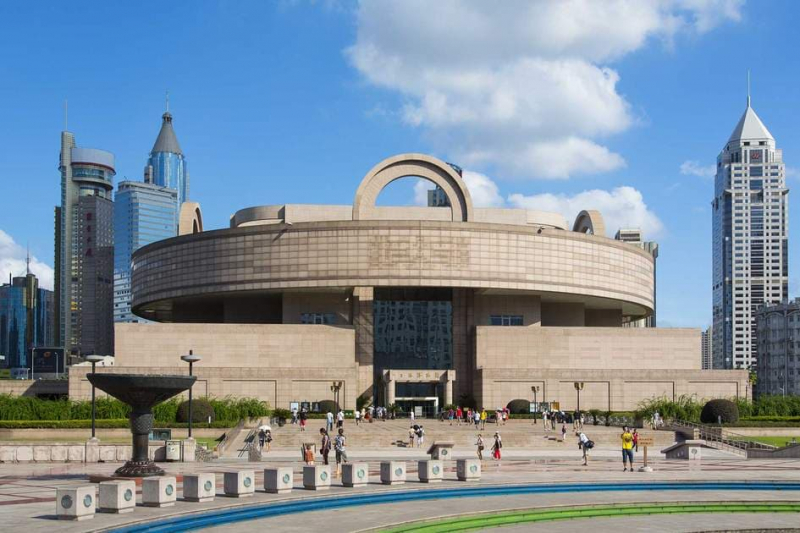
Via: Insight Guides 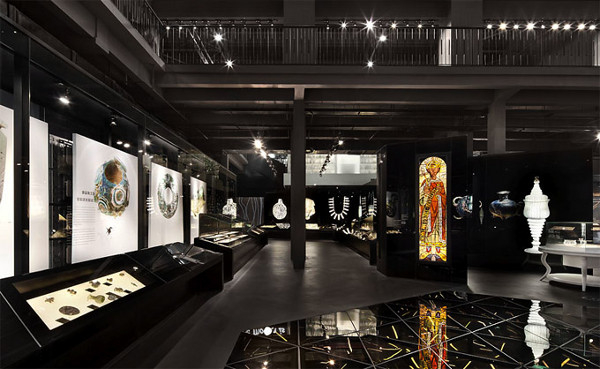
Shanghai Museum of Glass (Via: TheCoolist) -
The Shaanxi History Museum, an integrative history museum located west of the Giant Wild Goose Pagoda, is a national first-class museum and China's first significant modern national museum. It was rewarded as the architectural legacy of the twentieth century in China, with ancient capital history for 13 beautiful ancient dynasties. It was co-built by central and local governments.
Shaanxi History Museum is a shining pearl, a treasury of China, and an art palace showcasing ancient Shaanxi and Chinese civilization, thanks to its enormous cultural legacy and profound cultural accumulation in particular Shaanxi history and culture. Pristine stone implements used by ancient human ancestors, different artifacts of ancient bronze wares, pottery figurines, gold and silver works, and unrivaled murals are among the museum's superb collected antiques that span over 1 million years and include numerous cultural relics of various types, high grade, and significant value.
Shaanxi History Museum holds multiform exhibitions to reveal the great achievements of the Chinese nation in ancient times, which are split into five divisions in the central hall: Preface Hall, Permanent Exhibition, Topic Exhibition, Temporary Exhibition, and International Gallery. The three must-see exhibits of the Shaanxi History Museum are Shaanxi Ancient Civilization, Tang Tombs Murals, and Treasures of the Great Tang Dynasty.
Location: No.91 Xiaozhai East Rd, Yanta District, Xian City, Shaanxi Province
Website: sxhm.com
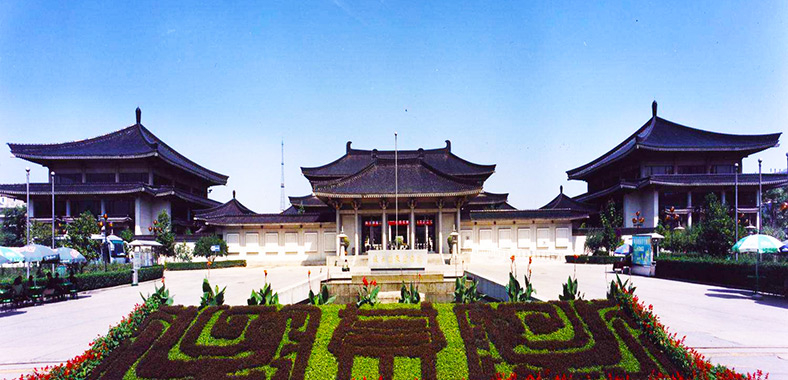
Via: China Discovery 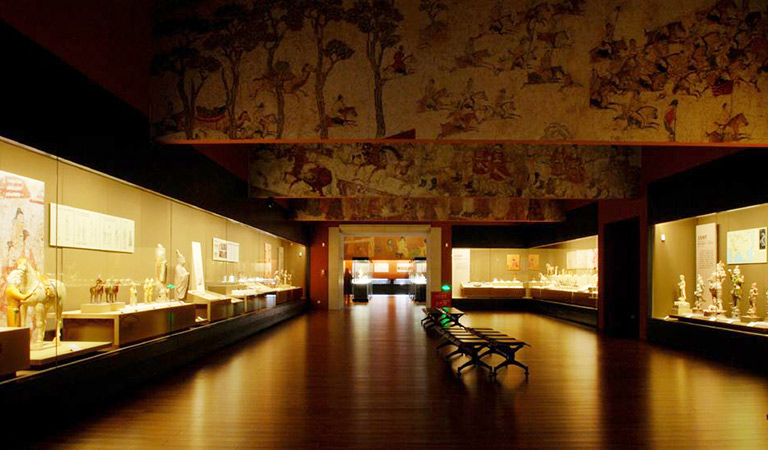
Via: China Discovery -
The former National Central Museum, China's oldest museum, was founded in 1933 after the closure of Nanjing Museum, one of China's top three museums and the country's first significant national comprehensive museum. It is one of China's top eight national museums, with collections that rank among the top three in the country. Relics from the Palaeolithic era to the present day include stoneware, crockery, jades, bronze ware, porcelain, painting and calligraphy, needlework, folklore, and art pieces of high historical and cultural worth, totaling 1,062 cultural relics of higher national grade.
With the addition of the four galleries of Temporary, Republican Period, Intangible Heritage, and Digital Gallery based on the two galleries of Art and History, the Nanjing Museum now has six separate galleries within one museum structure. Aside from the fundamental exhibitions, Nanjing Museum hosts more than ten temporary exhibitions each year, including collection theme exhibitions, essence displays of cultural treasures from neighboring provinces, and modern art exhibitions.
Location: No.321 Zhongshan East Rd, Xuanwu District, Nanjing City, Jiangsu Province
Website: www.njmuseum.com/en/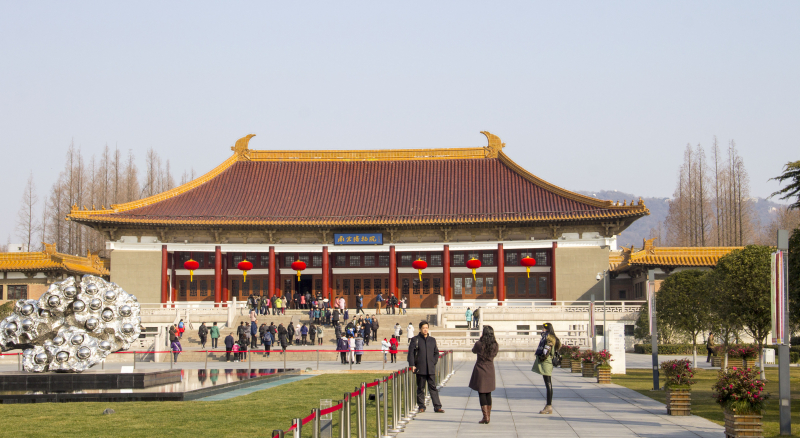
Via: Wikipedia 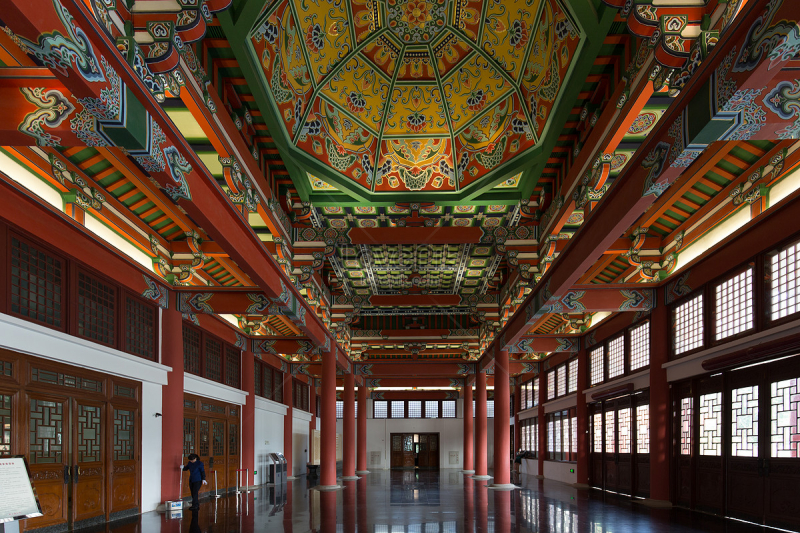
Via: Lovepik -
The National Museum of China, which was formed in 2003 by the merger of the Chinese History Museum and the Museum of the Chinese Revolution, is China's largest single-building museum and the world's top popular cultural architecture, rich in significant historic and cultural heritages. The National Museum, known for its comprehensive status in terms of collection, exhibition, research, archaeology, and public education, has evolved into the ancestral hall for Chinese Civilization, the Cradle of Chinese Dream, where it records over 5000 years of Chinese history and culture and preserves countless national treasures, the sublime spiritual homeland from which Chinese people inherit history and develop the future. It is an essential world discussion channel, a majestic palace displaying outstanding achievements in historical and artistic arts, as well as the social evolution of humanity as a whole.
The 5-story edifice with 48 display halls, a big Lecture Hall, Theatre, library, and public leisure area is one of the Chinese museums with opulent relic collections. Apart from permanent exhibitions such as Ancient China and The Road to Rejuvenation, the National Museum of China hosts a number of long-term theme exhibitions in the North and South Galleries, including Ancient Chinese Buddhist Sculpture and Ancient Chinese Bronze Art (both in No.2 Central Hall on F3), Exhibition for Fan Painting of the Ming and Qing Dynasties, Collection of Architectural Design, Ancient Chinese Jade Art, Ancient Chinese Money, and so on.
Location: No.16 East Changan Street, Dongcheng District, Beijing City
Website: chnmuseum.cn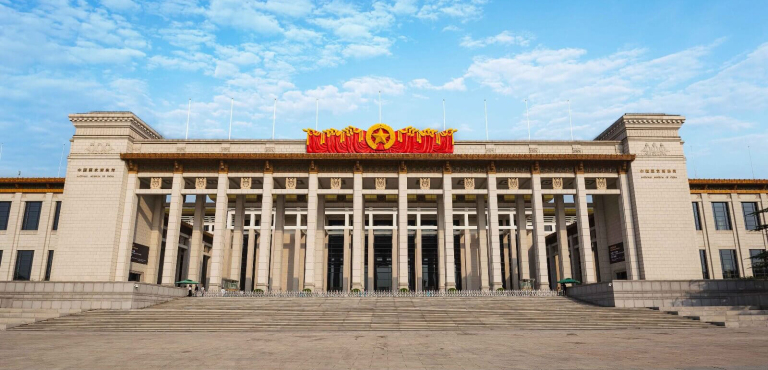
Via: China Discovery 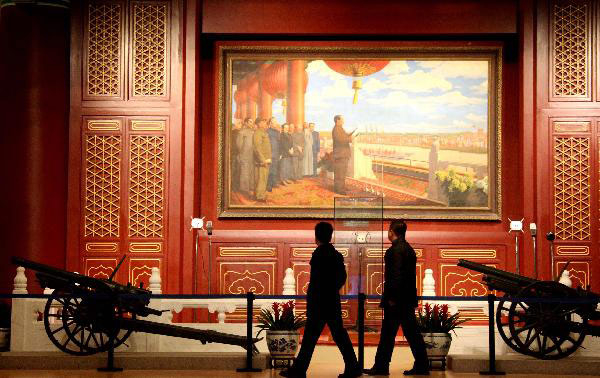
Via: China Discovery -
A fresh new Hunan Museum, Hunan's largest historical museum of fine arts portraying the old culture, has opened after five years of excellent expansion. The Hunan Museum, one of the eight national museums co-constructed by the central and local governments, reopened to the public on November 29, 2017, giving people better access to learn about Hunan's civilization growth and enjoy the profound cultural mystery.
Hunan Museum is divided into five levels and one underground basement, with two permanent exhibitions (Mawangdui and Hunanese) and four themed exhibitions (bronze, pottery, calligraphy and paintings, and crafts) to showcase exceptional human cultural heritages. The Multi-function Hall is at the top, while the visitor cafeteria and roof garden area are on the fourth floor. On the third floor, there is a themed exhibition as well as the Changsha Mawangdui Han Dynasty Tombs Exhibition. Three old tombs from the West Han Dynasty were discovered between 1972 and 1974, with a highly complicated tomb structure and over 3000 burial objects, including silks, manuscripts, silk paintings, lacquer, pottery, seals, Chinese herbal medicines, and other items, making it one of the most important archaeological finds of the twentieth century.
On the second level, next to the Education Center, the Hunanese Exhibition is a particular local history and cultural investigation of natural living and civilization process. It is divided into five sections. Home, Where Do I (Hunan) Come From - Huzhua Mountain Ruins, Wealth of Lake Dongting, Trace of Everyday Life - Minfang Lei Urn-shaped Bronze Wine-Vessel, a national treasure reunited with fragments purchased from overseas in 2014, and Spirit of Hunan showcasing Tan Sitong's heptachord On the first level, there are two temporary exhibition galleries on the left and centre fronts, Mawangdui Tombs Exhibition and academic theater, book store, VR experience area, and bookstore.
Location: No.50 Dongfeng Rd, Kaifu District, Changsha City, Hunan Province
Website: www.hnmuseum.com/en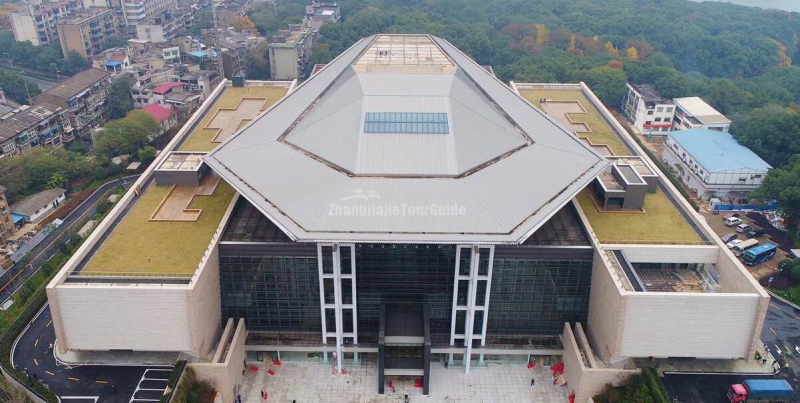
Via: Zhangjiajie Tour Guide 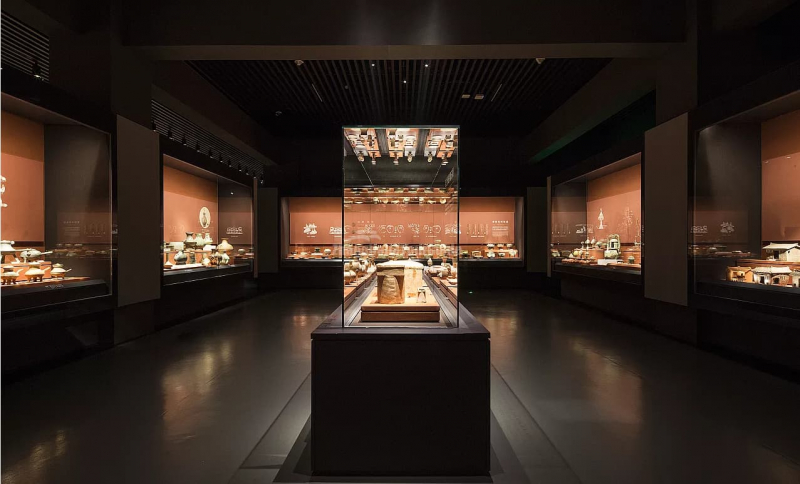
Via: Zhangjiajie Tour Guide -
Hubei Provincial Museum, founded in 1960 by Vice President Dong Biwu, is a national first-class museum and one of eight state museums jointly created by the central and provincial governments. It is an AAAAA picturesque location, a significant scientific research base for lacquerware preservation, and the world's largest museum with the most collections and scientific strength.
Aside from the great tour treasures, there are a large number of relics discovered, which are distinctively local and present the ancient society of Hubei, such as the valuable eggshell painted pottery of spindle wheel from Qujialing Culture in the Neolithic Period, Jade human and hawk from Tianmen Shijia Ruins, and the large jade Ge and bronze tripod excavated in Panlong City.
Currently, the Hubei Provincial Museum hosts about ten permanent exhibitions, as well as a few temporary exhibitions each year, such as the Buddha Exhibition of Buddhist Art of Gandhara and other domestic and international exchange exhibitions. Chime Pay and Dance's extension cultural performance received high praise because it displays to the audience a grand antique royal singing and dance scene recreated on a modern stage.
Location: No.160 Donghu Rd, Wuchang District, Wuhan City, Hubei Province
Website: hbww.org/home/EnglishIndex.aspx
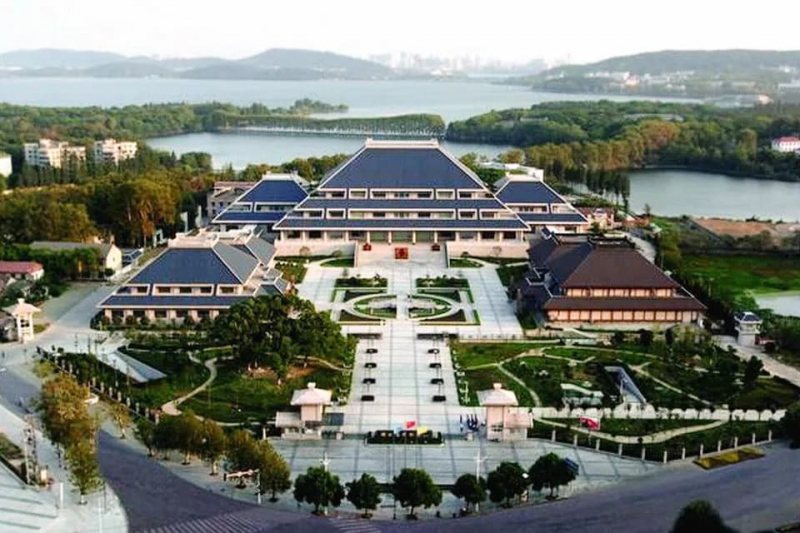
Via: HiSoUR 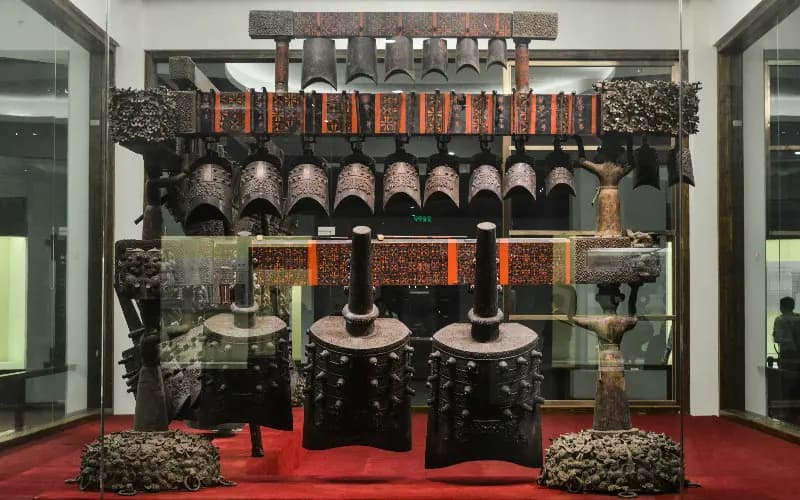
Via: China Highlights -
Henan Museum is one of China's oldest museums and the country's first national museum, built by both the national and local governments. The brand new site was relocated from Kaifeng to Zhengzhou numerous times before reopening on May 1, 1998, as one of China's largest comprehensive museums, with over 5000 pieces of First and Second Grade Cultural Relics.
The museum's building is well-built in a magnificent, primal, and exquisite shape with a distinct artistic style, making it an exceptional manifestation of Central Plain Culture. Other structures for comprehensive service and business, training, and relics storage are in the area, such as the pyramidal main pavilion in the central location, which is the most important exhibition gallery.
The former exhibition rooms were upgraded in 2009 to include a permanent exhibition hall called Ancient Astronomy, as well as four theme galleries and special exhibitions. There are eight exhibition halls in the Ancient Astronomy, with four on the first floor (Primitive Society, Xia & Shang Dynasty, Western Zhou, and Eastern Zhou), and four on the second floor (Western Han and Eastern Han Dynasty Hall, Han Jin Dynasty Hall, Sui & Tang Hall, and Song & Yuan Dynasty Hall).
Location: No.8 Nongye Rd, Jinshui District, Zhengzhou City, Henan Province
Website: english.chnmus.net
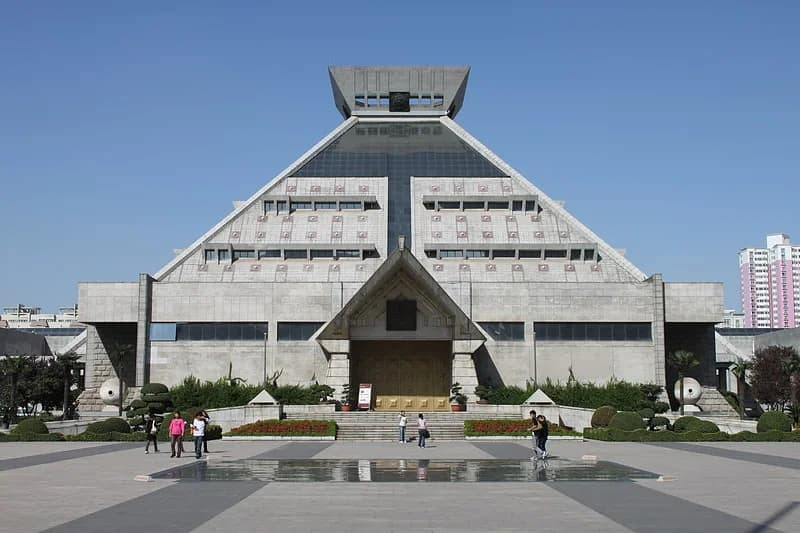
Via: english.chnmus.net 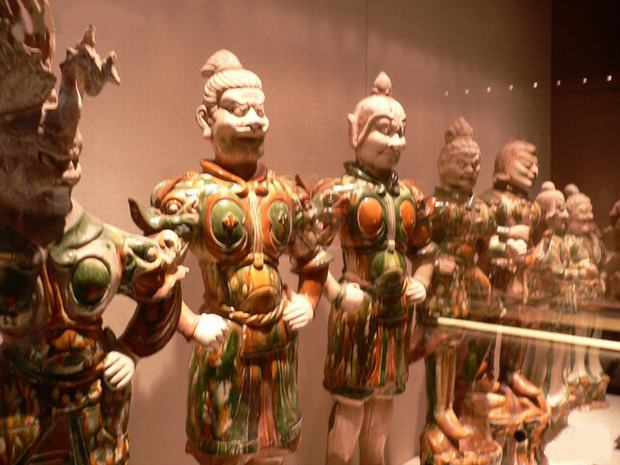
Via: Global Times -
In 2001, the permanent display "The Hong Kong Story" debuted, it takes viewers on a 400 million-year voyage across ancient space-time to obtain a comprehensive grasp of Hong Kong's history and culture. The permanent exhibition at the Hong Kong Museum of History is now receiving extensive renovations. We organize the "Recreating a Classic: The Best Features of The Hong Kong Story exhibition to display the essence of "The Hong Kong Story" before the new permanent exhibition opens. Featuring about 460 sets of selected exhibits and 210 photos, the exhibition is composed of five sections including prehistoric Hong Kong and historical development, folk culture in Hong Kong, cession of Hong Kong and early growth of the city, Japanese occupation, modern metropolis and concludes with the return to the motherland in 1997.
For enhanced participation and enjoyment, new multimedia programs and photo-taking zones have been added, allowing visitors to relive memories of ancient Hong Kong. The Museum has released a new movie in which curators, designers, and conservators involved in the creation of "The Hong Kong Story" discuss the curatorial concept, interesting tales, and problems encountered during the process.
Location: 100 Chatham Rd S, Tsim Sha Tsui, Hongkong
Website: hk.history.museum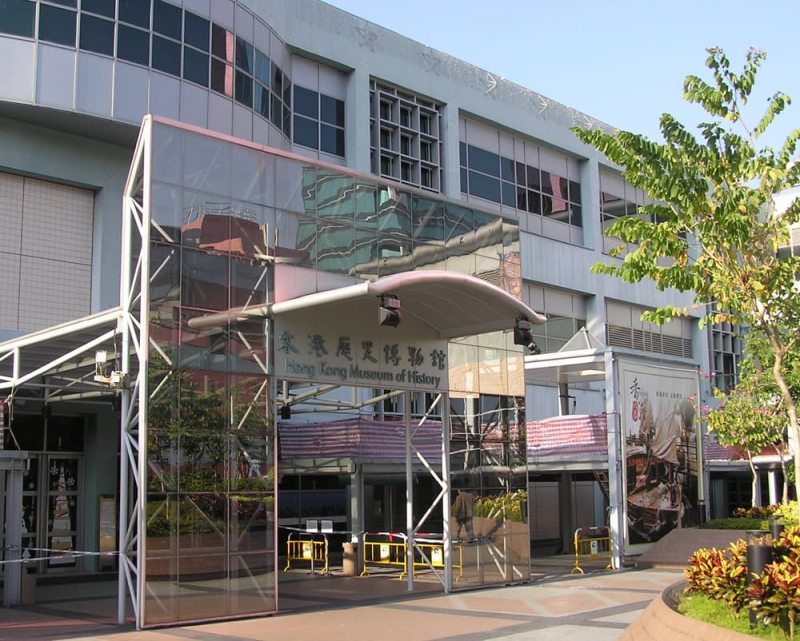
Via: Trip.com 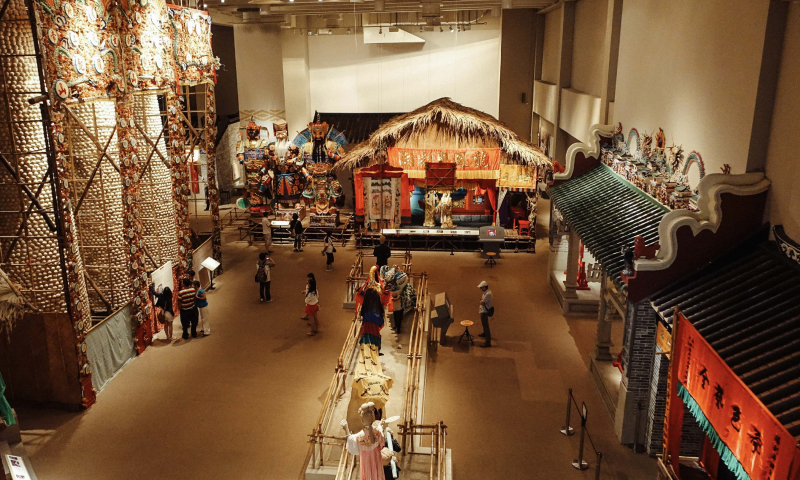
Via: Trip.com -
Jinsha Site Museum is a modern garden museum that displays the ancient Shu Culture of Sichuan during the Shang and Zhou Dynasties and is a landmark in Chengdu City. It is built on the Jinsha Ruins (the oldest site in Chengdu). The two major buildings of the Jinsha Site Museum, which is slowly increasing, are the Ruins Gallery and Exhibition Hall built on slopes. The finest two symbols of cosmology are the circular design of the Ruins Gallery and the square exhibition building. Ancient people believed the universe was orbicular and the earth was a rectangle.
Ruins Gallery, which faces East Gate's Qingyang Avenue, is the spot where massive spaces to offer the sacrifice of Jinsha Ruins can be located, and it is China's best-reserved large site for holding worship ceremonies. The display of original discoveries, such as massive tree roots, not only preserves the treasures' integrity and authenticity but also provides visitors with visual shocks. This is the ideal setting for experiencing enormous ancient sacrifices and attentively inspecting archaeological activities.
On two stories and one basement, the Site Exhibition Hall in the north has five halls and a 4D cinema. Primitive Homeland (900 square meters) is located on the second floor of the west hall. The diorama, in conjunction with the well-designed live-action, depicts an actual living environment of 3000 years ago. The King Palace at a Glance (900 sq m) is located in the eastern hall of the second level and depicts the lifestyles of ancient Jinsha people through life sketches, tools, tombs, pottery production, and other activities.
Location: No.2 Jinsha Site Road, Chengdu
Website: jinshasitemuseum.com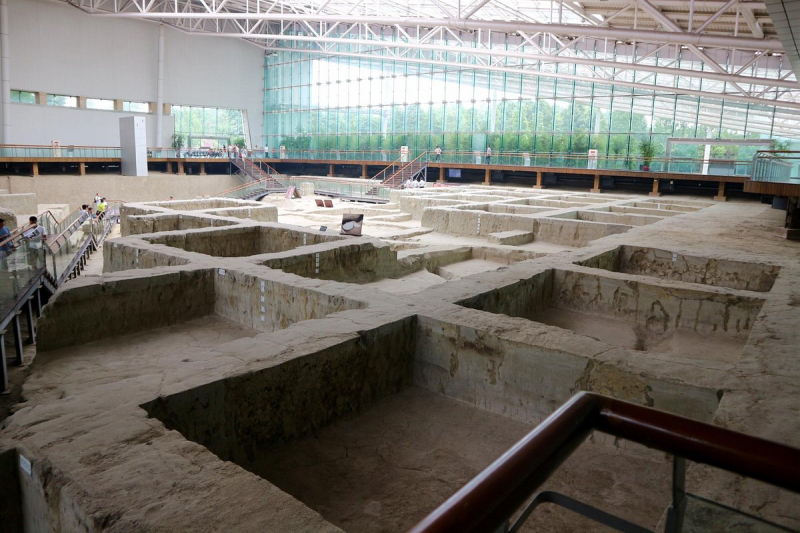
Via: TripAdvisor 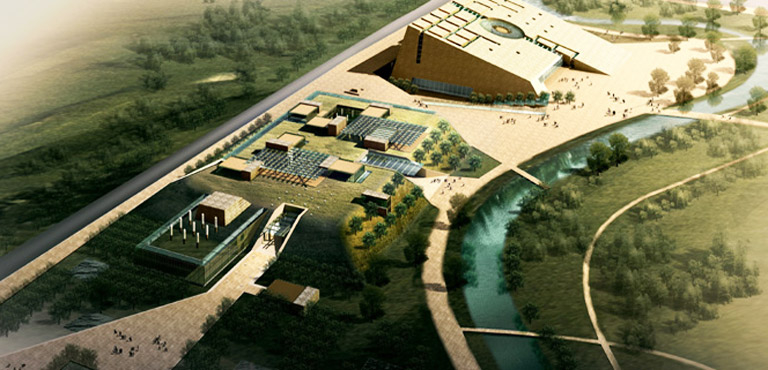
Via: China Discovery












